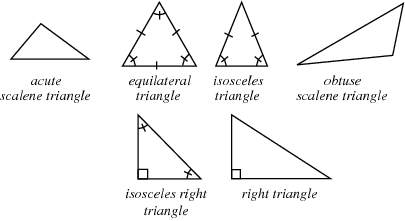I am so glad to be back! I very much enjoyed attending TCEA in Austin, but I truly looked forward to bringing some of my new knowledge back!
Our focus today was on working with triangle hierarchies. While at TCEA I learned about a website called Wonderopolis. This site has an "I wonder" question each day for the kids to explore. I happened upon one called "How Many Types of Triangles are There?" It included a terrific video of an optical illusion using triangles.
Once we watched the video, I did a formative assessment with the classes called "Always, Sometimes, Never." I found this assessment idea in the book, Mathematics Formative Assessment by Page Keeley and Cheryl Rose Tobey. Using Kahoot, the students were presented with 11 statements about triangles. They needed to think about what they already knew about triangles and use this information to help them to choose "always, sometimes, or never" . The eleven statements are below:
- Triangles are named by their angles.
- Triangles are named by the number of congruent sides.
- A right triangle has t
wo right angles. - An acute triangle has all acute angles.
- An obtuse triangle has three obtuse angles.
- An equivalent triangle has 3 congruent sides and angles.
- A triangle can have two names.
- An isosceles triangle
is named for its two congruent sides. - A scalene triangle
is named for its angles. - The angles within a triangle measure 180 degrees.
- A triangle is the most stable shape.
Once we finished the Kahoot, I introduced my classes to a new way for me to blend my classroom with digital content called Blendspace. I had worked to integrate my Triangle lesson an technology and was excited to bring the lesson to my students. I shared my "blendspace" lesson called Triangle Hierarchy with my students through their Google Classroom:
Box 1 had my students going to the wonderopolis.org page "How Many Types of Triangles Are There?" I wanted them to use this page to help them fill out their their Triangle Classification (Box 2):
I had recreated this on a Google Draw so that students could use a text box to fill in the blank spaces.
Boxes 3, 4, and 5 went together. Box 3 asked the students to open a Google Form where I had placed "Is it Possible" questions for the students to explore. I wanted them to determine the two names triangles have:
I continued this line of questioning through acute and obtuse angles as well. In order to explore these questions, Box 4 led the students to an Interactive Triangle website that allows students to move the angles and side lengths to fit the description of the triangle they are attempting to create:
It was at this point that we ran out of class time. Students were in the process of exploring triangles using this site and completing their Google Form "Is it Possible?" This is where we will pick up tomorrow!






No comments:
Post a Comment